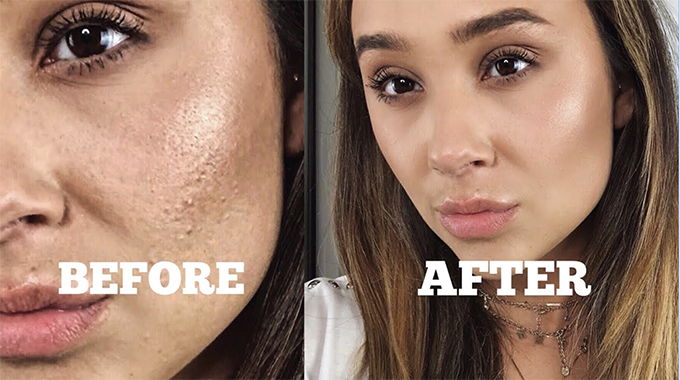How to ace ‘no make-up’ trend, tips on moisturiser

Fashion 263
Besides the return of the Y2K skinny brows, one of the other biggest make-up trends this year is the “no make-up” look.
In fact, at spring/summer 2023 fashion week shows, designers were sending models down the runway with no make-up at all.
In order to pull off this look you need to have flawless skin. Which means you need to up your skincare game.
But not everyone has perfect skin no matter how intense their skincare routine is. However, that doesn’t have to stop you from getting the look.
Of course, we’re going to fake it in such a way that no one will even notice it.
It’s so simple that it will soon become your go-to everyday natural look. Here’s how to get the fresh face look with just a little bit of help from your make-up basics.
Before you apply anything to your face make sure that your skin is moisturised.
It’s impossible to get this look if your skin is dry and ashy.
If you have a bit of extra time apply a hydrating face mask before applying make-up.
Use a primer. A pore-filling primer will smooth and fill any pores without clogging them. This creates a smooth canvas even before you apply any foundation.
For this look, you want to use as little foundation — if at all — as possible.
Look out for an illuminating primer which will (give you) a dewy glow and automatically makes you look hydrated. It’s all about the skin!
If you’re feeling too bare and simply cannot do without foundation, then use a very light formula foundation. A tinted moisturiser is ideal. Stay far away from any full-coverage matte foundations.
Ditching the foundation? Then a touch of concealer is all you need.
Simply dab a lightweight concealer on areas like dark rings and pesky blemishes that need a bit of cover.
Add just a hint of colour with blusher. Use a creamy blush in a tone that is as close to your natural rosy skin colour as possible.
You can dab a bit of the same cream blush on your lips for a natural lip.
However, here are tips on how to choose the best moisturiser for your skin type.
We all know that moisturising is an essential part of your skincare routine.
Moisturising your skin helps to protect your skin against the onset of fine lines and wrinkles caused by a lack of hydration.
However, not all moisturisers are made equal, and there’s no one size fits all solution.
Here is a breakdown of what type of moisturiser you should use for your specific skin type. First, you have to determine what your skin type is.
There are five different types of skin: normal, dry, oily, combination (both oily and dry skin) and sensitive.
Normal skin is neither too dry nor too oily. It has a regular texture, no imperfections and a clean, soft appearance, and it does not need special care.
Dry skin is generally characterised by a feeling of tightness and roughness.
Oily skin is very easy to spot. It has a porous, humid and bright appearance. Adolescents are prone to oily skin.
Combination skin is exactly that: a combination of dry and oily skin. The area with more oil is usually the T- zone — forehead, nose, and chin — while the skin on the cheeks is normal or dry.
Sensitive skin is fragile skin and is usually accompanied by feelings of discomfort, such as heat, tightness, redness or itching.
Here is a breakdown of what type of moisturiser you should use for your specific skin type.
Dry skin: Look for a heavy moisturiser. Skip lotions and head straight for creams. Look for ingredients like hyaluronic acid and dimethicone, which help keep skin hydrated.
Oily skin: If you have oily skin, you’re most likely to benefit from using lighter moisturisers that are water-based. Stay clear of heavy creamy moisturiser, as it will make your skin oilier.
Combination skin: You’ll need a moisturiser that can reduce excess oiliness and shine without clogging the pores or drying out the skin. Look out for formulas that contain ingredients like hyaluronic acid and glycerin.
Sensitive skin: When shopping for moisturisers for your sensitive skin, it’s important to check the labels. Avoid ingredients that may irritate your skin. These include alcohol, fragrances, sulfates, preservatives and dyes. — IOLNews.com








Comments